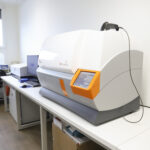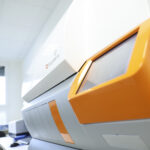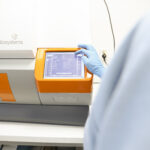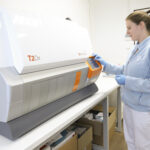Prague, January 24, 2023 – Time is the decisive factor in sepsis of the organism (blood poisoning in layman's terms). The new diagnostic device, which has been available to doctors and laboratory workers at the Institute of Medical Microbiology of the 2nd Faculty of Medicine of the UK and Motol University of Applied Sciences since January, can reduce the time it takes to detect an infection in a patient by several tens of hours (up to 2 days). The advantage is also the smaller amount of blood examined and thus the lower burden on the patient. While with the commonly used hemoculture, at least 40 ml of blood is "collected" from an adult and it takes 2 to 3 days to find out the result, with the new method only 4 ml is enough and the results for the presence of six different bacteria can be determined in about 3,5 hours. In addition, the new method is 2x to 3x more successful in detecting the infection than it was before.
Sepsis is a serious condition that develops in the body as a result of the body's inappropriate response to infection. It is usually accompanied by a number of symptoms, including fever, increased heart and breathing rates, fainting and/or impaired consciousness. If sepsis is not recognized in time and not treated appropriately, it can lead to septic shock, organ failure and subsequently death. “It is reported that every hour of delay reduces the chance of survival by 7,5%. In small children or seriously ill patients, death can occur even within a few hours," prof. MD Pavel Dřevínek, PhD., head of the Institute of Medical Microbiology.
Finding out that sepsis is going on in the body is a very complex matter. One of the diagnostic options and very useful indicators of the causative agent of sepsis is the detection of bacteria in the blood that cause it. Their detection is crucial so that the correct antibiotic treatment can be applied. "The detection of bacteria is normally done in a microbiology laboratory with the help of blood culture systems. However, they have two major disadvantages. They can detect only about 50% of all infections in the blood, and they also do not offer rapid diagnosis, which is especially important for septic conditions." explains Professor Dřevínek.
Last year, the device was tested exclusively at FN Motol, and now it is already in full operation. Its high sensitivity and short detection time will be of great importance and impact on the prognosis of patients in a severe (septic) condition, for whose survival it is crucial to detect the causative agent of the infection in time and thus start effective antibiotic treatment as soon as possible.
The University Hospital in Motol is the largest medical facility in the Czech Republic and one of the largest in Europe. It is also the main teaching base of students of the 2nd Faculty of Medicine, Charles University, and some workplaces of the 1st Faculty of Medicine, Charles University are also located here. FN Motol provides basic, specialized and super-specialized health care and services in the medical fields in the form of outpatient and inpatient care for children, adults and seniors. In terms of construction, it consists of two interconnected monoblocks (children's and adult part) and several separate pavilions. At the Motol University Hospital, more than one million patients are treated annually at 56 clinics.
Media Contact:
Pavlína Danková, phone: 724 227 503, e-mail: pavlina.dankova@fnmotol.cz
Press release for download: We can now detect the source of the infection in the blood within a few hours. Previously, we had to wait several days



